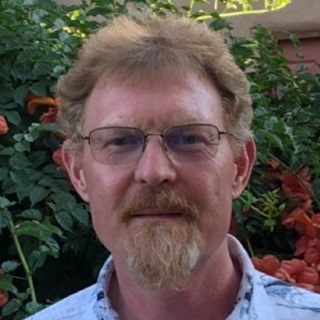STE Highlights, February 2022
Awards and Recognition
Earth and Environmental Sciences
Progress on understanding radioactive gas migration from underground nuclear explosions
Materials Physics and Applications
High-quality quasi-2D perovskite crystalline layers integrated in detectors for X-ray imaging
Clues about unconventional superconductivity from high-field Hall data
Awards and Recognition
Bredeweg elected vice chair of Nuclear Data Working Group
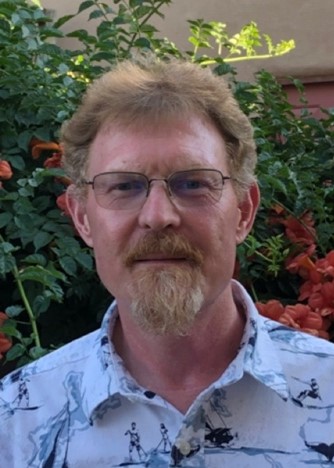
Todd Bredeweg
Todd Bredeweg, nuclear chemistry team leader with the Nuclear and Radiochemistry group at Los Alamos National Laboratory, has been named vice chair of the national Nuclear Data Working Group (NDWG). Bredeweg, a 20-year veteran of the Laboratory, has been a member of the NDWG since its inception in 2015, and is the organization’s first vice chair.
The NDWG comprises national laboratory representatives coordinating on behalf of interested federal agencies. The group seeks to facilitate communication, collaboration and cooperation on interagency nuclear data needs. As vice chair, Bredeweg will support the chair in meeting NDWG goals. His role will involve communicating with both federal program managers (mirrored as the Nuclear Data Interagency Working Group, or NDIAWG) and national laboratory and university points of contact to match needs to capabilities; support planning and execution of the annual Workshop for Applied Nuclear Data Activities workshops and NDWG business meetings; and provide all-around support to the broad activities of the NDWG and the NDIAWG.
Bredeweg’s extensive experience with the NDWG includes representing the Office of Nuclear Detonation Detection in the National Nuclear Security Administration under three consecutive federal program managers. He led the Nuclear Fission Experiments topic, including subtopics on Materials of Interest and Target Fabrication, during the 2016 Nuclear Data Exchange Meeting, a briefing for a group of federal program managers with interests in nuclear data. The briefing and the resulting report lead to the creation of the NDIAWG. He organized and chaired a session on Targetry, Facilities and Detector Arrays during the 2018 Nuclear Data Road-mapping and Enhancement Workshop, the first open workshop organized by the NDWG, and helped assemble the final workshop report. He also contributed to the final report for the session on Nuclear Data for Isotope Production and Target Fabrication at the 2020 Workshop for Applied Nuclear Data Activities. Bredeweg’s experience with NNSA Defense Programs includes a decade managing and executing projects supported by the Office of Experimental Sciences, a similar time as the LANL Radiochemistry and Nuclear Science Capability lead. He has added more recent interactions with the Nuclear Criticality Safety Program in building up new experimental capabilities at the National Criticality Experiments Research Center.
Bredeweg has over 25 years of experience in experimental nuclear chemistry/physics including both differential and integral nuclear data measurements performed at a range of facilities. Since arriving at Los Alamos National Lab in 2002 he has focused mostly on neutron-induced nuclear reaction cross section measurements supporting multiple national security programs. He started at the Laboratory building and commissioning the DANCE array for neutron capture measurements, and remains a member of the core collaboration. He also participated in several measurement campaigns using the lead slowing-down spectrometer at LANSCE, fission and activation cross section measurements at the Triangle Universities Nuclear Laboratory and work on inertial confinement fusion radiochemistry at the Laboratory for Laser Energetics at the University of Rochester, the Nevada National Security Site (NNSS) and the National Ignition Facility. Over the past decade Bredeweg has led a series of NA-22 funded multi-laboratory efforts on energy integral fission product yield and reaction rate measurements using the critical assemblies at the National Criticality Experiments Research Center at the NNSS. His current project includes research staff from Los Alamos, Lawrence Livermore National Laboratory, Pacific Northwest National Laboratory, as well as a collaboration with researchers at CEA-DAM under the NNSA-CEA International Agreement on Fundamental Science Supporting Stockpile Stewardship. In parallel with the integral measurements, he has stayed involved in several multi-laboratory campaigns to measure energy differential fission product yields at TUNL and the nearby HIGS facility.
Bredeweg received a bachelor’s degree in chemistry from Hope College and a doctoral degree in nuclear chemistry from Indiana University Bloomington.
Bioscience
Report describes Laboratory research and development contributions to pandemic response
The “Key Pandemic Response R&D Contributions” report details Laboratory capabilities bearing on pandemic response.
A new report issued by the Special Office for COVID-19 at Los Alamos National Laboratory describes the “research goals, mitigation successes, and beneficial collaborations” as part of the Laboratory’s response to the COVID-19 pandemic. The “Key Pandemic Response R&D Contributions” report details the capabilities that the Laboratory brought to bear across the fields of science, technology and engineering.
The Laboratory invested $24.2 million throughout 2020 and 2021, distributed among research and development projects, COVID testing and processing, and technology evaluation and demonstration. Among many contributions, research excellence developed leads for diagnostics, vaccines and therapeutics. Laboratory research and development provided data used for national testing efforts, virus evolution modeling, and genome analytics to validate assays. The Lab’s workforce protection efforts included policies to mitigate transmission and thousands of on-site tests. The report describes key contributions in experimental biosciences, genetics and bioinformatics, multi-scale modeling, epidemiological modeling and predictive analysis, solution-driven multidisciplinary integration, and capability stewardship.
The report also includes a link to a list of COVID-19 or SARS-COV-2 works published and presentations through November 2021.
Funding and Mission
The work supports the Global Security mission area and the Complex Natural and Engineered Systems capability pillar.
Technical Contact: Pat Fitch
Chemistry
Chemical Certification & Compatibility Laboratory (C3Lab) capabilities
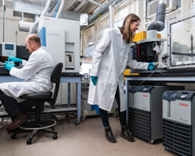
Materials certification and characterization in the lab supports pit manufacturing, detonator production, and weapons research and development.
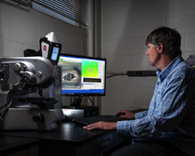
Analytical capabilities include surface and reaction science, chromatography, and chemical compatibility and materials aging.
The Chemical Certification & Compatibility Laboratory (C3Lab) has a collection of analytical chemistry and materials testing capabilities available to projects across the Laboratory. Primarily supported by Pit Production Mission Integration, the C3Lab has developed a LANL-approved Quality Assurance Plan (QAP) and complies with ISO 17025 and Weapon Quality Policy NAP-401.1 to support Weapons Production and Nuclear Enterprise Assurance. C3Lab ensures process material integrity and performance by combining analytical chemistry services and reaction engineering, as well as material analyses and evaluations.
The C3Lab holds responsibility for quality: certification of chemicals to ACS Reagent Chemical specifications, method development for Commercial Grade Dedication to Nuclear Quality Assurance (NQA-1), determination of metal feedstock pedigree, chemical compatibility and materials aging in multi-material systems. The lab also supports materials certification and characterization: pit manufacturing, process fluid qualification, process material certification, detonator production, microclad and ferric chloride, metal pedigree, weapons research and development, catalysts and inks, and uranium and plutonium corrosion. Analytical capabilities supported include surface/reaction science (XPS, SEM and adsorption isotherm); gas, liquid and ion chromatography; determination of metal feedstock pedigree; and chemical compatibility and materials aging in multi-material systems.
Capabilities also support war reserve detonator manufacturing, institutional-level customers and quality-related chemical certifications. The C3Lab supports everything from large programs with ongoing needs for certification and compatibility testing to small principal investigator-led projects requiring specific analytical solutions.
Funding and Mission
The work supports the Global Security mission area and the Materials for the Future capability pillar.
Technical Contact: Dan KellyEarth and Environmental Sciences
Progress on understanding radioactive gas migration from underground nuclear explosions
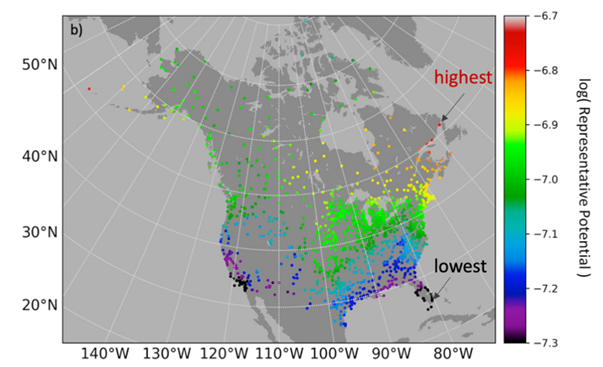
Map of barometric-pumping efficiency potentials. The locations with the highest and lowest potentials are indicated.
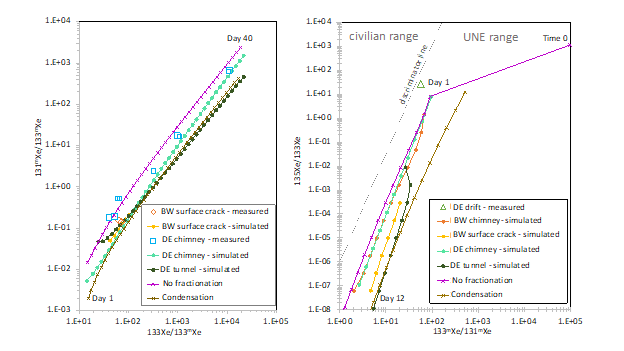
3-isotope (left) and 4-isotope (right) plots showing measured and simulated xenon isotopes ratios.
Los Alamos National Laboratory researchers published results about their advance of predictive modeling capabilities in support of detecting radioactive gas seepage from underground nuclear explosions (UNEs). Research team members from the Computational Earth Science (EES-16) group applied modeling tools to improve understanding of forces driving late-time radioactive gas migration (days to weeks following UNE detonation) and subsurface processes that impact noble gas isotope ratios. The results were recently published in Geophysical Research Letters and the Journal of Environmental Radioactivity, respectively.
First Large-scale Atmospheric Pumping Analysis
Laboratory researchers collaborated with the Environmental Protection Agency to perform the first continental-scale barometric pumping analysis for North America. Barometric pumping is a natural process that drives gas from underground to the surface as the atmospheric pressure fluctuates. This mechanism causes subsurface “breathing,” or air exchange between the atmosphere and subsurface. Barometric pumping plays an important role in a variety of subsurface gas transport applications, including soil vapor remediation, remote detection of UNEs for treaty verification, and greenhouse gas leakage from abandoned oil and gas wells.
The team compiled barometric pressure records collected by the Iowa State University ASOS airport weather data network and decomposed the pressures into a distribution of individual sinusoidal components defined by their period/frequency and amplitude. The team identified the representative components associated with high barometric pumping potentials for each location (i.e., the components responsible for the vast majority of gas transport) and evaluated the influence of geographic factors, including latitude, longitude, elevation and distance from the coast. The team determined that latitude is the dominant factor controlling geographic trends in potential, with greater potentials moving from south to north (see Figure 1). Additionally, the range in potentials for a given latitude decreases with distance from the coastlines, indicating less variability in potential within continental interiors.
This study can be used to assess geographic differences in barometric pumping efficiency potential for passive, contaminated soil remediation efforts and the risk of unwanted barometrically-induced gas transport such as carbon dioxide leakage from geologic storage sites, radon gas entry into structures, and methane leakage during natural gas extraction operations. The dominant barometric component at a given location can be calculated using readily available barometric records to find a quick estimate of the time frame of gas transport, which will aid gas seepage site monitoring plans and predictive transport modeling efforts.
Subsurface Fractionation Processes’ Impacts on UNE Gas Isotopic Ratios
Detection of radioactive xenon isotopes can provide evidence of the occurrence of underground nuclear explosions (UNEs), and the world-wide International Monitoring System measures atmospheric concentrations of noble gases, including xenon, as indicators of recent UNEs. Isotopic ranges of 135Xe, 133mXe, 133Xe, and 131mXe can discriminate between UNEs and civilian sources, such as nuclear reactors for power generation, for cases when all four of the xenon isotopes are measured. However, there are many physical and chemical factors that influence xenon isotope ratios in gases reaching the ground surface from UNEs, such as fractionation during post-detonation cavity evolution as precursors elements condense out of the gas phase and condense into rock and pore water, and transport through rock.
Laboratory researchers used gas samples taken from two historic underground nuclear tests done in 1989 at the Nevada National Security Site, formerly the Nevada Test Site, to build on previous work investigating how fractionation due to cavity evolution and transport influence gaseous xenon isotope ratios around UNEs. The team’s study of physical fractionation processes during transport in the subsurface included examining Henry's law partitioning of xenon isotopes and their parents into pore water. Because elements within decay chains have different transport behavior and exist for variable lengths of time, transport rates for some xenon isotopes are faster, which causes shifts in the relative abundances.
The gas samples from Barnwell, a test conducted in a vertical shaft at Pahute Mesa, and Disko Elm, done in P-tunnel at Aqeduct Mesa, provided xenon isotope information to examine fractionation due to early-time cavity processes, transport through the rock, or dispersal through tunnels. By comparing the relative abundances of isotopes 135Xe, 133mXe, 133Xe and 131mXe in the samples and model results, researchers were able to investigate how subsurface processes such as post-UNE condensation history, UNE emplacement configuration (shaft versus tunnel), and transport processes affect the relative abundances of xenon isotopes.
Numerical flow and transport models developed for the two sites had mixed success when attempting to match the observed xenon isotope ratios. At the Barnwell site, the simulated xenon isotope ratios were consistent with measurements from the chimney and ground surface, and appeared to have been affected by subsurface transport, while at the Disko Elm site, some samples showed evidence for significant fractionation due to early-time condensation of refractory xenon-precursor radionuclides into the melt glass (Fig. 2). The mixed results suggest that there are additional fractionation processes that need to be considered for predicting isotope ratios, while also showing that the criteria for discriminating between civilian and UNE sources of atmospheric xenon is not invalidated, and in fact furthered, by the subsurface transport and condensation effects.
Funding and mission
This research was supported by the National Nuclear Security Administration Office of Defense Nuclear Nonproliferation Research and Development and the DOE Office of Science, Office of Workforce Development for Teachers and Scientists. The work supports the Global Security mission area and the Science of Signatures capability pillar.
References
“Continental‐Scale Geographic Trends in Barometric‐Pumping Efficiency Potential: A North American Case Study,” Geophysical Research Letters, 48, 17 (2021). DOI: https://doi.org/10.1029/2021GL093875. Authors: Avendaño, S. T., Harp, D. R., Kurwadkar, S., Ortiz, J. P., & Stauffer, P. H. (Los Alamos National Laboratory)
“Evaluation of several relevant fractionation processes as possible explanation for radioxenon isotopic activity ratios in samples taken near underground nuclear explosions in shafts and tunnels,” Journal of Environmental Radioactivity, 237 (2021). DOI: https://doi.org/10.1016/j.jenvrad.2021.106698. Authors: Bourret, S.M., Kwicklis, E.M., & Stauffer, P. H. (Los Alamos National Laboratory)
Technical Contacts: John P. Ortiz, Michelle Bourret and Phil Stauffer
Materials Physics and Applications
High-quality quasi-2D perovskite crystalline layers integrated in detectors for X-ray imaging
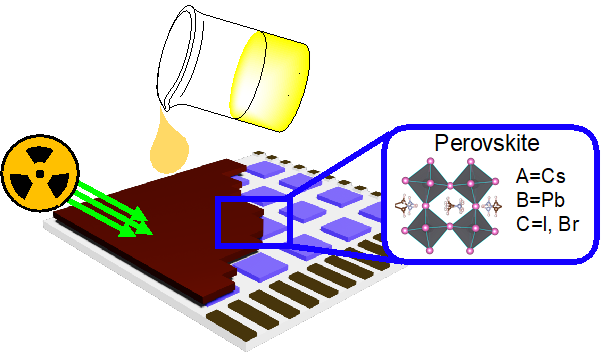
Schematic illustration of a perovskite X-ray imager made by coating the perovskite layer on pixelated substrates from solution. A typical perovskite structure is shown in the square on the right.
Digital X-ray panels, employing semiconductor-based flat screens instead of a phosphor film, represent a next-generation technique for medical imaging, security screening and threat detection. Classical semiconductors are expensive to scale up to meet demand for applications. A large panel with high detection efficiency enables high resolution medical imaging with a low X-ray dosage that may be significantly safer for patients. X-ray imaging also offers a non-destructive tool to visualize the internal structure of an object, or to probe the scattering patterns when an X-ray is scattered from a crystal – useful in understanding a material’s structures and dynamics. Researchers at the Center for Integrated Nanotechnologies at Los Alamos National Laboratory, writing in the journal Advanced Materials, have integrated quasi-2D perovskite materials, a low-cost nano-structured semiconductor, in digital X-ray panels.
The conventional method for building high performance detectors often yields a porous, micro-crystalline structure that kills the detection efficiency and operational stability. The team has discovered that high efficiency X-ray sensors can be achieved with the hot-casting method, suitable for depositing thick crystalline layers that are the key element for building high performance detectors.
The research team introduced n-butylamine iodide into a methylammonium lead iodide precursor, leading to a “quasi-2D” perovskite structure. It is found the addition of the n-butylamine iodide in the precursor reduces the nucleation sites, which promotes large crystalline grain formation. Coating at elevated temperatures, on both rigid and flexible substrates, produced 10-µm-thick quasi-2D perovskite layers with near single crystalline quality.
Photodiodes built with the quasi-2D layers exhibit a low noise and stable operation under constant electrical field over 96 hours in dark conditions, and over 15 hours under X-ray irradiation. The team found that the detector responds sensitively under X-ray, delivering a high sensitivity of 1214 µCGyair-1cm-2, and a sensitivity gain was observed when operated under higher fields. The sensor developed by the team exhibits 100 times better detection sensitivity than the state-of-the-art selenium panel. Finally, the work demonstrated high resolution images using a single pixel device that can resolve features in the order of magnitude of 80 to 200 µm. The work paves the path for printable direct conversion X-ray imager development.
The solution-based method, combining cation engineering and hot-casting, can be adapted for coating over a large, meter-scale area or can be applied on curved surface for 3D imaging to support radiation detection from all directions. Los Alamos National Laboratory first discovered the hot-casting method to produce highly crystalline perovskite layers for photovoltaics and radiation detections. The method is particularly useful for thick crystalline layer fabrication – free of solvent or voids – that enables ultra-sensitive X-ray imaging. The approach is also compatible with other coating methods like ink-jet printing and blade coating where a thicker layer on a larger area can be expected for upscaled hard X-ray sensing.
The hotcasting method is LANL IP No. US10770239B1 and provisional IP No. S133859.000.
Funding and Mission
The work was supported by the Laboratory Directed Research and Development program office, the J. Robert Oppenheimer Distinguished Postdoc Fellowship, the U.S. Department of Energy Office of Science, and the U.S. Department of Defense Defense Threat Reduction Agency. The work supports the Energy Security mission area and the Materials for the Future capability Pillar.
Reference
“Quasi-2D Perovskite Crystalline Layers for Printable Direct Conversion X-Ray Imaging,” Advanced Materials (2022). DOI: https://doi.org/10.1002/adma.202106498. Authors: Hsinhan Tsai, Shreetu Shrestha, Darrick Williams, Wanyi Nie (Los Alamos National Laboratory); Lei Pan, Lei R. Cao (The Ohio State University); Hsin-Hsiang Huang, Leeyih Wang (National Taiwan University); and Joseph Strzalka (Argonne National Laboratory).
Technical Contact: Wanyi Nie
Clues about unconventional superconductivity from high-field Hall data
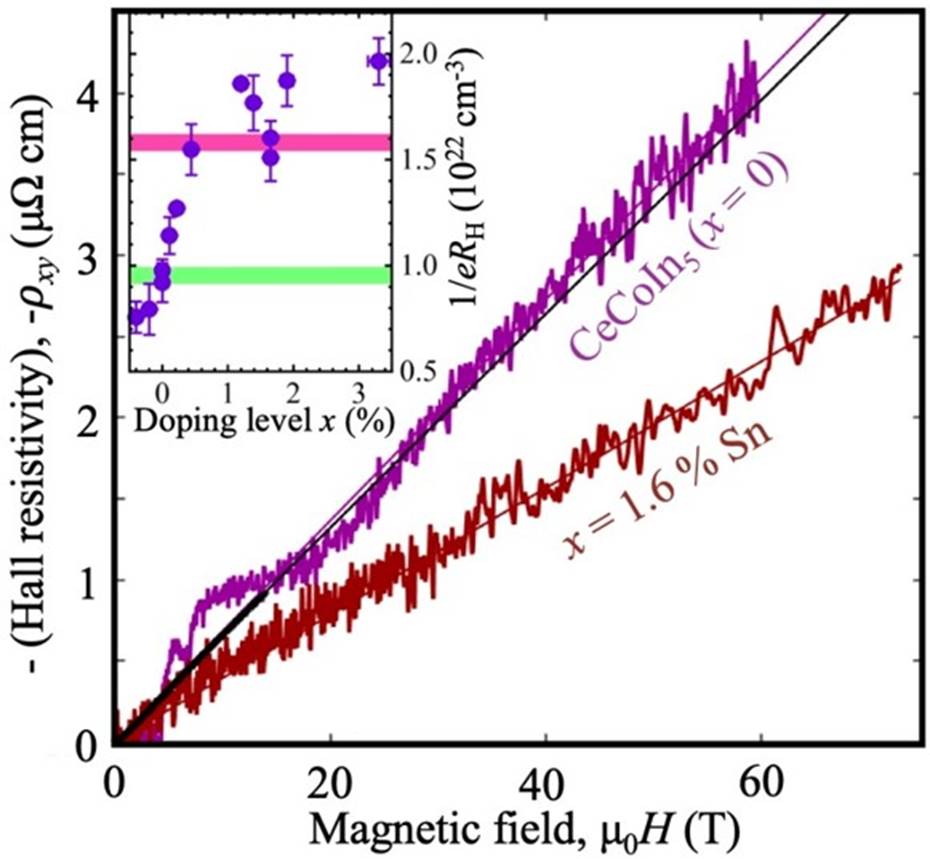
Inset: Quantum phase transition is seen as a jump in mobile electron density (∝ 1/RH) vs doping x. Horizontal lines show expected values for 0 (green) and 1 (purple) mobile f electrons per Ce. Main: on one side of the transition (CeCoIn5) the Hall resistivity grows steeply with field; on the other (1.6% Sn), the number of mobile electrons has increased sharply.
Superconductors, materials that offer no electrical resistance at low temperatures, have long been objects of study and fascination. As described recently in Science magazine, a research group including scientists from Los Alamos National Laboratory has uncovered the quantum phase transitions which may be behind the behavior of so-called “high-temperature” cuprate superconductors. For reasons previously little understood, the cuprates display their superconducting properties at temperatures as high as 100 degrees Kelvin, much higher than traditional superconductors such as lead or tin.
Researchers studied a quantum phase transition in cerium-cobalt-indium 5 (CeCoIn5), a material with similar crystal structure, transport properties, and, key to the research, superconducting properties to the cuprates. Unlike most transitions between phases of matter, quantum phase transitions are not driven by thermal parameters – heat or cold. Instead, that seen in CeCoIn5 is associated with delocalization of electrons at a transition between Fermi surfaces of different volume. Complementary experiments suggest that the change in Fermi-surface volume is not accompanied by broken symmetry in the material’s crystal structure. In cuprates, similar quantum phase transitions that appear not to be associated with a broken symmetry are thought to underlie the mechanism of superconductivity itself.
The experiment represents the first quantitative study of this class of phase transitions, greatly helping in the interpretation of recent discoveries in the cuprates. When subjected to magnetic fields of up to 73 T at the National High Magnetic Field Laboratory’s Pulsed-Field Facility (MPA-MAGLAB), the quantum phase transition in CeCoIn5 was revealed in a quantity called the Hall resistance. At (and only at) very high magnetic fields, the Hall resistance is determined by the number of mobile electrons, allowing it to be used to detect the change in electron density that occurs at the quantum phase transition.
The National High Magnetic Field Laboratory’s Pulsed Field Facility at LANL is the only pulsed field user facility in the United States. The Pulsed Field Facility develops and maintains a set of powerful, non-destructive pulsed magnets providing fields from 60 T to 101 T with different pulse widths that are tailored to support a wide variety of users.
Funding and Mission
The experiments were supported by the National Science Foundation and the Department of Energy (DOE). Design and construction of specialized equipment was funded by the DOE Basic Energy Sciences program “Science at 100 T.” This and similar work at MPA-MAGLAB focuses on quantum materials that underpin the National Quantum Initiative, as well as supporting the Global Security mission, and the Materials for the Future capability pillar.
Reference
“Evidence for a delocalization quantum phase transition without symmetry breaking in CeCoIn5,” Science, 375, 6576, 76 (2021). DOI: 10.1126/science.aaz4566. Authors: John Singleton, Johanna C. Palmstrom, Laurel Winter, Ross McDonald (National High Magnetic Field Laboratory, Los Alamos); Nikola Maksimovic, Daniel H. Eilbott, Tessa Cookmeyer, Fanghui Wan, Vikram Nagarajan, Shannon C. Haley, Eran Maniv, Amanda Gong, Stefano Faubel, Ian M. Hayes, Sooyoung Jang, Samuel Ciocys, Jacob Gobbo, Yochai Werman, Ehud Altman, Alessandra Lanzara, James G. Analytis (University of California, Berkeley, Lawrence Berkeley National Laboratory); Jan Rusz, Peter M. Oppeneer (Uppsala University); Ali Bangura (National High Magnetic Field Laboratory, Tallahassee); Ping Ai, Yi Lin (Lawrence Berkeley National Laboratory).
Technical Contact: John Singleton


